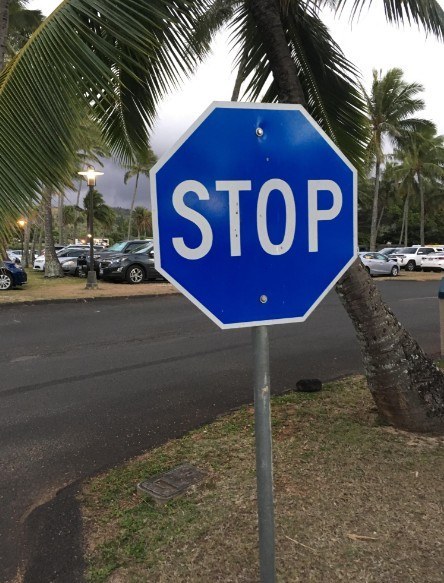Blue stop signs exist, but they serve a very specific purpose, quite distinct from the familiar red octagons that dominate public roads. You won’t come across these blue signs on city streets or highways because they aren’t recognized or authorized by the U.S. Department of Transportation. Instead, they’re used in private settings—at the entrances to gated neighborhoods, inside university campuses, corporate facilities, or on internal roads of industrial areas. Although they don’t carry legal weight under public traffic laws, they still play a crucial role in organizing vehicle flow and protecting pedestrians in areas outside municipal jurisdiction.
The choice to use blue rather than red often reflects a deliberate effort to differentiate private signage from government-regulated signs. In gated communities, for example, blue stop signs can support a sense of privacy or blend with the neighborhood’s visual theme. Similarly, universities and businesses may choose unique signage colors to reflect their brand identity, ensuring that wayfinding elements match the design of their buildings and outdoor spaces.
Even though they aren’t official, blue stop signs generally follow the same design as red ones. They maintain the signature octagon shape and feature the word “STOP” in large capital letters, which drivers instantly recognize. Many also include reflective surfaces to enhance visibility at night—compensating for blue’s weaker psychological association with caution compared to red. These reflective coatings help ensure the signs remain noticeable even in dim lighting.
To understand why red became the standard color for stop signs, we need to look back to the early 1900s. Originally, stop signs were yellow with black letters because those colors stood out well under the streetlights of that time. As lighting improved and experts better understood how color affects perception, red emerged as the most effective color for warnings. By the 1950s, the Manual on Uniform Traffic Control Devices (MUTCD) officially adopted red as the standard, especially with the introduction of highly reflective materials that made red signs easier to see in all conditions.
Blue stop signs, therefore, symbolize a break from this traditional standard. They highlight the distinction between private roads—often overseen by internal security or private management—and publicly governed streets. Since these signs aren’t supported by traffic laws, running a blue stop sign doesn’t result in a traffic ticket; rather, consequences depend on property-specific rules.
Interestingly, the unusual color of blue stop signs can have a surprising safety benefit. Because drivers don’t expect to see them, the signs can cause a brief moment of confusion that leads to greater alertness and slower driving. This unintentional pause might help reduce accidents in private areas by drawing more attention to intersections.
Although they are unlikely to be used on public roads, blue stop signs showcase the adaptability that private entities have when managing traffic and safety. Whether chosen for visual appeal, brand consistency, or the desire to set private rules apart from public ones, these signs serve a real purpose. They remind us that even in a system as regulated as road signage, there’s still space for customization and creative problem-solving to fit different environments.
